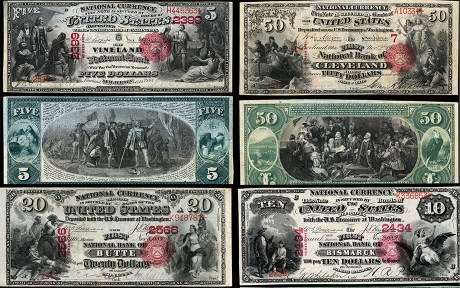Kinda Hachem
Federal Reserve Bank of New York Feed Items
The Future of Payment Infrastructure Could Be Permissionless
—
Following the recent passage of legislation in the U.S., payment stablecoins seem to be on the brink of wider-scale adoption and explosive growth in market capitalization. In this post, we contend that the driving factor is not their proximity to digital cash instruments, but rather how they are transferred—via global, open-access, peer-to-peer systems, or “permissionless blockchains,” for short.
How Has Treasury Market Liquidity Fared in 2025?
—
In 2025, the Federal Reserve has cut interest rates, trade policy has shifted abruptly, and economic policy uncertainty has increased. How have these developments affected the functioning of the key U.S. Treasury securities market? In this post, we return to some familiar metrics to assess the recent behavior of Treasury market liquidity. We find that liquidity briefly worsened around the April 2025 tariff announcements but that its relation to Treasury volatility has been similar to what it was in the past.
Banking System Vulnerability: 2025 Update
—
As in previous years, we provide in this post an update on the vulnerability of the U.S. banking system based on four analytical models that capture different aspects of this vulnerability. We use data through 2025:Q2 for our analysis, and also discuss how the vulnerability measures have changed since our last update one year ago.
A Country‑Specific View of Tariffs
—
U.S. trade policy remains in flux. Nevertheless, important elements of the new policy regime are apparent in data through July. What stands out are the large differences in realized tariff rates by trading partner, ranging from less than 5 percent for Canada and Mexico to 15 percent for Japan and to 40 percent for China. This post shows that the bulk of cross-country differences in tariff rates is explained by two factors: the U.S.-Canada-Mexico free trade agreement and differing sales shares in tariff-exempt categories.
A Historical Perspective on Stablecoins
—
Digital currencies have grown rapidly in recent years. In July 2025, Congress passed the “Guiding and Establishing National Innovation for U.S. Stablecoins Act” (GENIUS) Act, establishing the first comprehensive federal framework governing the issuance of stablecoins. In this post, we place stablecoins in a historical perspective by comparing them to national bank notes, a form of privately issued money that circulated in the United States from 1863 through 1935.
The Zero Lower Bound Remains a Medium‑Term Risk
—
Interest rates have fluctuated significantly over time. After a period of high inflation in the late 1970s and early 1980s, interest rates entered a decline that lasted for nearly four decades. The federal funds rate—the primary tool for monetary policy in the United States—followed this trend, while also varying with cycles of economic recessions and expansions.
New Dataset Maps Losses from Natural Disasters to the County Level
—
The Federal Reserve’s mission and regional structure ask that it always work to better understand local and regional economic activity. This requires gauging the economic impact of localized events, including natural disasters. Despite the economic significance of natural disasters—flowing often from their human toll—there are currently no publicly available data on the damages they cause in the United States at the county level.
Why Does the U.S. Always Run a Trade Deficit?
—
The obvious answer to the question of why the United States runs a trade deficit is that its export sales have not kept up with its demand for imports. A less obvious answer is that the imbalance reflects a macroeconomic phenomenon. Using national accounting, one can show deficits are also due to a persistent shortfall in domestic saving that requires funds from abroad to finance domestic investment spending. Reducing the trade imbalance therefore requires both more exports relative to imports and a narrowing of the gap between saving and investment spending.